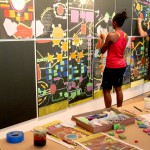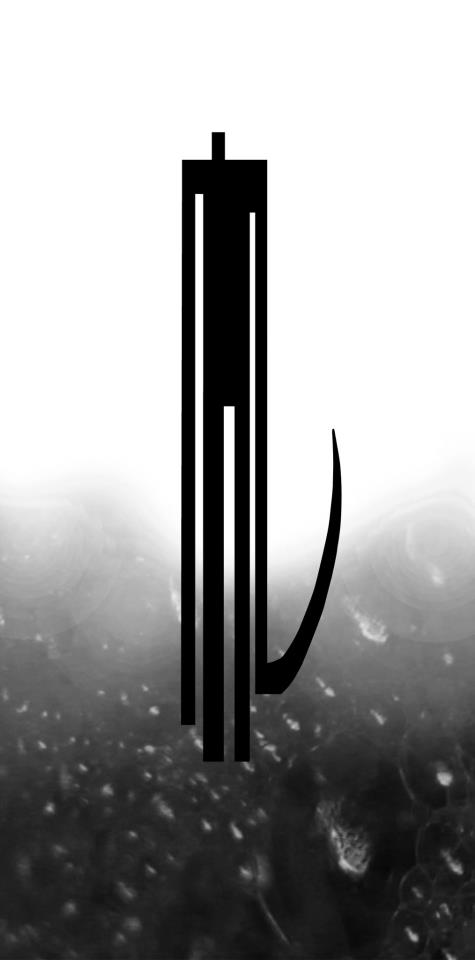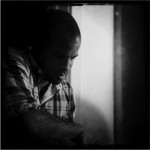 Guillermo Gómez-Peña was born in Mexico City and moved to the US in 1978, where he established himself as a performance artist, writer, activist, and educator. He has pioneered multiple media, including performance art, experimental radio, video, performance photography and installation art. His eight books include essays, experimental poetry and chronicles in both English, Spanish and Spanglish.
Guillermo Gómez-Peña was born in Mexico City and moved to the US in 1978, where he established himself as a performance artist, writer, activist, and educator. He has pioneered multiple media, including performance art, experimental radio, video, performance photography and installation art. His eight books include essays, experimental poetry and chronicles in both English, Spanish and Spanglish.
Most of his artistic and intellectual work concerns the interface between North and South (Mexico and the U.S.), border culture and the politics of the brown body. His original interdisciplinary arts projects and books explore borders, physical, cultural and otherwise, between his two countries and between the mainstream U.S. and the various Latino cultures: the U.S.-Mexico border itself, immigration, cross-cultural and hybrid identities, and the confrontation and misunderstandings between cultures, languages and races. His artwork and literature also explore the politics of language, the side effects of globalization, “extreme culture” and new technologies from a Latino perspective. He is a patron of the London-based Live Art Development Agency. Gómez-Peña received both his B.A. (1981) and M.A. (1983) from California Institute of the Arts. He studied Linguistics and Latin American Literature at the UNAM (1974–1978, Mexico City).


 The Yes Men are a group who use any means necessary to agree their way into the fortified compounds of commerce, and then smuggle out the stories of their undercover escapades to provide a public glimpse at the behind-the-scenes world of big business. The stories are often both shocking and hilarious. They have been called “the Jonathan Swift of the Jackass generation” by author Naomi Klein. The Yes Men have impersonated World Trade Organization, Dow Chemical Corporation, and Bush administration spokesmen on TV and at business conferences around the world. They do this (a) in order to demonstrate some of the mechanisms that keep bad people and ideas in power, and (b) because it’s absurdly fun. Their main goal is to focus attention on the dangers of economic policies that place the rights of capital before the needs of people and the environment.
The Yes Men are a group who use any means necessary to agree their way into the fortified compounds of commerce, and then smuggle out the stories of their undercover escapades to provide a public glimpse at the behind-the-scenes world of big business. The stories are often both shocking and hilarious. They have been called “the Jonathan Swift of the Jackass generation” by author Naomi Klein. The Yes Men have impersonated World Trade Organization, Dow Chemical Corporation, and Bush administration spokesmen on TV and at business conferences around the world. They do this (a) in order to demonstrate some of the mechanisms that keep bad people and ideas in power, and (b) because it’s absurdly fun. Their main goal is to focus attention on the dangers of economic policies that place the rights of capital before the needs of people and the environment. Born in Mutare, Zimbabwe and currently a resident of New York City, Chipaumire has been challenging stereotypes of Africa and the black performing body, art, and aesthetic for the past decade. She has studied dance in many parts of the world including Africa (Senegal, Burkina Faso, Kenya, and South Africa), Cuba, Jamaica and the U.S. A graduate of the University of Zimbabwe’s School of Law, Chipaumire holds an M.A. in Dance and M.F.A. in Choreography and Performance from Mills College (CA). Chipaumire is a 2012 Alpert Award in the Arts recipient and 2011 United States Artist Ford Fellow, and a two-time New York Dance and Performance (aka “Bessie”) Awardee. Her work has been supported by the MAP Fund, the Jerome Foundation, NYFA B.U.I.L.D., National Dance Project, NYSCA, The Joyce Theater Foundation with support from the Rockefeller Foundation’s Cultural Innovation Fund, and the National Endowment for the Arts. Chipaumire has been an adjunct faculty member at Arizona State University-Tempe, Bennington College, the University of Minnesota-Minneapolis, and Barnard College.
Born in Mutare, Zimbabwe and currently a resident of New York City, Chipaumire has been challenging stereotypes of Africa and the black performing body, art, and aesthetic for the past decade. She has studied dance in many parts of the world including Africa (Senegal, Burkina Faso, Kenya, and South Africa), Cuba, Jamaica and the U.S. A graduate of the University of Zimbabwe’s School of Law, Chipaumire holds an M.A. in Dance and M.F.A. in Choreography and Performance from Mills College (CA). Chipaumire is a 2012 Alpert Award in the Arts recipient and 2011 United States Artist Ford Fellow, and a two-time New York Dance and Performance (aka “Bessie”) Awardee. Her work has been supported by the MAP Fund, the Jerome Foundation, NYFA B.U.I.L.D., National Dance Project, NYSCA, The Joyce Theater Foundation with support from the Rockefeller Foundation’s Cultural Innovation Fund, and the National Endowment for the Arts. Chipaumire has been an adjunct faculty member at Arizona State University-Tempe, Bennington College, the University of Minnesota-Minneapolis, and Barnard College.
 Ricardo Dominguez is an artist and associate professor of visual arts at UC San Diego. He has been the subject of controversy over a number of acts of electronic civil disobedience on his own and with the Electronic Disturbance Theater, which he co-founded with Brett Stalbuam, Stefan Wray, and Carmin Karasic.
Ricardo Dominguez is an artist and associate professor of visual arts at UC San Diego. He has been the subject of controversy over a number of acts of electronic civil disobedience on his own and with the Electronic Disturbance Theater, which he co-founded with Brett Stalbuam, Stefan Wray, and Carmin Karasic. Ashley Hunt is an artist, activist and writer who engages the ideas of social movements, modes of learning and public speech. His work is often concerned with questions of power and the ways that some people have more, others have less, and what can be done about that. Ashley’s works include the performance, Notes on the Emptying of a City, a ‘dismantled film’ that recounts his time in New Orleans after Hurricane Katrina; Communograph, a multi-platform project of community authorship through Project Row Houses in Houston; 9 Scripts from a Nation at War, the collaborative video installation produced for documenta 12 with Andrea Geyer, Sharon Hayes, Katya Sander and David Thorne; On Movement Thought and Politics, an interdisciplinary collaboration with dance and performance artist, Taisha Paggett; and the ongoing Corrections Documentary Project, a body of work addressing the politics of growth in the largest prison system in the world — that of the United States. Recent exhibitions and performances include the 2012 Live Arts/Philly Fringe Festival, the 2012 Biennial in Sinop, Turkey, the Museum of Modern Art, the Made in LA, 2012 biennial of the Hammer Museum and LAX Art, and Woodbourne State Prison in upstate New York. Ashley co-directs the Photography and Media Program at California Institute of the Arts and just planted a peach tree.
Ashley Hunt is an artist, activist and writer who engages the ideas of social movements, modes of learning and public speech. His work is often concerned with questions of power and the ways that some people have more, others have less, and what can be done about that. Ashley’s works include the performance, Notes on the Emptying of a City, a ‘dismantled film’ that recounts his time in New Orleans after Hurricane Katrina; Communograph, a multi-platform project of community authorship through Project Row Houses in Houston; 9 Scripts from a Nation at War, the collaborative video installation produced for documenta 12 with Andrea Geyer, Sharon Hayes, Katya Sander and David Thorne; On Movement Thought and Politics, an interdisciplinary collaboration with dance and performance artist, Taisha Paggett; and the ongoing Corrections Documentary Project, a body of work addressing the politics of growth in the largest prison system in the world — that of the United States. Recent exhibitions and performances include the 2012 Live Arts/Philly Fringe Festival, the 2012 Biennial in Sinop, Turkey, the Museum of Modern Art, the Made in LA, 2012 biennial of the Hammer Museum and LAX Art, and Woodbourne State Prison in upstate New York. Ashley co-directs the Photography and Media Program at California Institute of the Arts and just planted a peach tree.
 Mirjana Joković was born in Serbia, formerly a part of Yugoslavia. Mirjana started to work professionally as an actor in the movies and at the National Theater in Belgrade, Yugoslavia. Soon, she was appearing in numerous television projects and as a lead at the National Theater. Three years later she appeared as a regular character in the TV series Grey Home, which is still known as one of the most distinctive works of television during the former Yugoslavia. In addition to her association with the National Theater and Yugoslav Drama Theater (two of the most prestigious theater groups in the country), Mirjana also continued her film career, for which she was recognized with Best Leading Actress at the Rio De Janeiro International Film Festival in 1988 and the Best International Actress of The Year at Spain’s San Sebastian Film Festival in 1988. Ms. Jokovic returned to Yugoslavia to take leads in a number of films, for which she was awarded five times in five consecutive years and recognized as the Best Actress of the Year (Empress Theodora Award) as well as the Best Female Lead (Golden Arena Award). During that same period, Mirjana also worked in Germany in 1989, taking the lead in the German-Yugoslav co-production of the film Serbian Girl directed by Peter Sehr. In 1993 Mirjana played lead roles in Underground directed by Emir Kusturica which won the Palme d`Or at the Cannes Film Festival in 1995 and Critics Circle Award in the US in 1997 and Vukovar which won Mirjana another Best Actress of the Year Award. The journey in the U.S. began with the off-Broadway production of Lynn Nottage’s Mud, River, Stone directed by Roger Rees at Playwrights Horizons. U.S. theater work includes a Broadway production ofElectra, directed by David Levaux. In 1999 she participated in The Institute of the Arts and Civic Dialogue. From 1999 to 2001, she worked at the American Repertory Theater where she performed in Full Circle (Chuck Mee) (Dir. Robert Woodruff, Dule Grit), Winters Tale (Dir. Slobodan Unkovski), Three Farces and the Funeral(Robert Brustein, Dir. Yuri Yereman), Mother Courage and Her Children (Dir. Janos Saaz) and Othello(Shakespeare) (Dir. by Yuri Yereman). In 2001, she returned to the McCarter Theater for the production of Romeo and Juliet (dir. Emily Mann) and also shot the film A Better Way to Die (Dir. Scott Wiper) for HBO. Other off-Broadway and regional productions include Necessary Targets by Eve Ensler directed by Michael Wilson, Sophocles’ Electra at Hartford Stage directed by Jonathan Wilson and Three Sisters directed by Carey Perloff at ACT. In 2004 she participated in the Sundance Theatre Lab as well as a co-production between Flemish National Theater, Serbian National Theater and Theatre`Epique from Brussels, Belgium, in a piece called Trous – Rupe-Haten, directed by Lorant Wanson.
Mirjana Joković was born in Serbia, formerly a part of Yugoslavia. Mirjana started to work professionally as an actor in the movies and at the National Theater in Belgrade, Yugoslavia. Soon, she was appearing in numerous television projects and as a lead at the National Theater. Three years later she appeared as a regular character in the TV series Grey Home, which is still known as one of the most distinctive works of television during the former Yugoslavia. In addition to her association with the National Theater and Yugoslav Drama Theater (two of the most prestigious theater groups in the country), Mirjana also continued her film career, for which she was recognized with Best Leading Actress at the Rio De Janeiro International Film Festival in 1988 and the Best International Actress of The Year at Spain’s San Sebastian Film Festival in 1988. Ms. Jokovic returned to Yugoslavia to take leads in a number of films, for which she was awarded five times in five consecutive years and recognized as the Best Actress of the Year (Empress Theodora Award) as well as the Best Female Lead (Golden Arena Award). During that same period, Mirjana also worked in Germany in 1989, taking the lead in the German-Yugoslav co-production of the film Serbian Girl directed by Peter Sehr. In 1993 Mirjana played lead roles in Underground directed by Emir Kusturica which won the Palme d`Or at the Cannes Film Festival in 1995 and Critics Circle Award in the US in 1997 and Vukovar which won Mirjana another Best Actress of the Year Award. The journey in the U.S. began with the off-Broadway production of Lynn Nottage’s Mud, River, Stone directed by Roger Rees at Playwrights Horizons. U.S. theater work includes a Broadway production ofElectra, directed by David Levaux. In 1999 she participated in The Institute of the Arts and Civic Dialogue. From 1999 to 2001, she worked at the American Repertory Theater where she performed in Full Circle (Chuck Mee) (Dir. Robert Woodruff, Dule Grit), Winters Tale (Dir. Slobodan Unkovski), Three Farces and the Funeral(Robert Brustein, Dir. Yuri Yereman), Mother Courage and Her Children (Dir. Janos Saaz) and Othello(Shakespeare) (Dir. by Yuri Yereman). In 2001, she returned to the McCarter Theater for the production of Romeo and Juliet (dir. Emily Mann) and also shot the film A Better Way to Die (Dir. Scott Wiper) for HBO. Other off-Broadway and regional productions include Necessary Targets by Eve Ensler directed by Michael Wilson, Sophocles’ Electra at Hartford Stage directed by Jonathan Wilson and Three Sisters directed by Carey Perloff at ACT. In 2004 she participated in the Sundance Theatre Lab as well as a co-production between Flemish National Theater, Serbian National Theater and Theatre`Epique from Brussels, Belgium, in a piece called Trous – Rupe-Haten, directed by Lorant Wanson.

 Chris Kallmyer is an artist who makes sound with everyday objects to explore the processes, customs, and environments through which humans have altered landscape and place. He has presented work at the Walker Art Center, the Los Angeles County Museum of Art (LACMA), the Museum of Contemporary Art Denver, the Hammer Museum, the Getty Center, REDCAT, Machine Project, and other spaces in America and Europe. Chris lives in Los Angeles where he collaborates frequently with Machine Project, is a member of wild Up, and earned his MFA in music from the California Institute of the Arts.
Chris Kallmyer is an artist who makes sound with everyday objects to explore the processes, customs, and environments through which humans have altered landscape and place. He has presented work at the Walker Art Center, the Los Angeles County Museum of Art (LACMA), the Museum of Contemporary Art Denver, the Hammer Museum, the Getty Center, REDCAT, Machine Project, and other spaces in America and Europe. Chris lives in Los Angeles where he collaborates frequently with Machine Project, is a member of wild Up, and earned his MFA in music from the California Institute of the Arts.

 Ajay Kapur is currently the Director of the Music Technology program (MTIID) at the California Institute of the Arts, as well as the Associate Dean for Research and Development in Digital Arts. He received an Interdisciplinary Ph.D. in 2007 from University of Victoria combining computer science, electrical engineering, mechanical engineering, music and psychology with a focus on intelligent music systems and media technology. Ajay graduated with a Bachelor of Science in Engineering and Computer Science from Princeton University in 2002.
Ajay Kapur is currently the Director of the Music Technology program (MTIID) at the California Institute of the Arts, as well as the Associate Dean for Research and Development in Digital Arts. He received an Interdisciplinary Ph.D. in 2007 from University of Victoria combining computer science, electrical engineering, mechanical engineering, music and psychology with a focus on intelligent music systems and media technology. Ajay graduated with a Bachelor of Science in Engineering and Computer Science from Princeton University in 2002. Jeepneys is the musical performance persona of Anna Luisa Petrisko, a multidisciplinary artist residing in Los Angeles, CA and outer-space. Navigating through science (non)fictional terrains and magical landscapes, Jeepneys sows a deep spiritual connection with her environment, ancestors, and intuition to explore the infinite possibilities to heal through art and music.
Jeepneys is the musical performance persona of Anna Luisa Petrisko, a multidisciplinary artist residing in Los Angeles, CA and outer-space. Navigating through science (non)fictional terrains and magical landscapes, Jeepneys sows a deep spiritual connection with her environment, ancestors, and intuition to explore the infinite possibilities to heal through art and music.